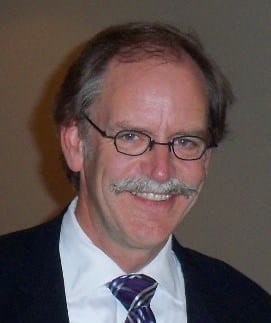By Tom Mone
One of the most memorable moments at the Pasadena Rose Parade earlier this week was the inspiring Donate Life float, which called attention to the incredible life-saving power of organ, eye and tissue donation. More than 96 individuals were honored on the float that day – from recipients who rode on the float to donors who were remembered through beautiful floragraphs to walkers who were part of a “kidney chain” of living donors and recipients.
While the topic of organ donation made parade headlines on January 2, these headlines often fade for much of the other 364 days a year and inspiring messages are easily forgotten. But that need not be the case. It is here that our nation’s hospitals, skilled nursing facilities and hospice programs can play a most crucial role. Hospitals, in particular, have long been a trusted source of information, service and compassion within their local communities. As such – and in recognition of the donation shortage we are currently facing – America’s hospitals have a crucial role and responsibility to facilitate a thoughtful conversation with their staff, patients, families and their communities on this topic. And there is no better time than the start of a new year to do just that through inspiring education, support and advocacy.
It is a cold, hard fact that 22 die unnecessarily every day in the United States waiting for an organ transplant. Currently more than 119,000 of our fellow citizens are waiting to receive lifesaving hearts, livers, lungs, kidneys and pancreases but there are simply not enough donors to meet the growing demand. A great deal of the problem rests in the public’s misconceptions about organ donation – how to register to be a donor, what is involved in the process, and how the donor’s body will be treated upon death.
The work begins with educating the internal staff, particularly those closest to potential donor situations. This includes staff in trauma, emergency units and the ICU, along with chaplains and social services, to make sure they understand the issues and have access to the right information in a timely manner should the opportunity for a donation arise. Even if they are not directly requesting donations from patients’ families, the support of these individuals will have a significant impact at the time of decision while also helping to shape the organization’s culture in this area.
Hospitals can also help by educating the community on the importance of registering to be a donor. Far more can be done in this area to ensure that the question of organ donation doesn’t arise for the average person only at the time of a very tragic circumstance. By then it is usually too late for the individual to express his or her intent to their family or physician and it rests upon next-of-kin to guess what their loved one would have wanted. Helping families and patients have that conversation before it’s too late and sharing the opportunity of donor registration can relieve families of the responsibility to try to guess their loved one’s wishes.

There are many other things hospitals can do at little or no cost to promote organ and tissue donation. They can have a donor registration table at community health fairs or work with a local organ and tissue recovery organization to provide a community lecture on the topic (perhaps in conjunction with a local physician). They can leverage already existing communication vehicles and include articles about donation in their community newsletter (both print and online), or set up a link on the hospital’s website through which people can learn about and sign-up to be a donor. They can work with the media to feature local donor recipients and tell the story of how one donor can save up to eight lives through organ donation and heal as many as 50-100 recipients through tissue donation.
It is also the hospital, perhaps more than anyone else, who can deliver the important message that there is no inherent conflict between saving lives and using organs for transplant. The doctors who work to save a patient’s life are not the same doctors involved with organ donation, and it is only after every attempt has been made to save a life that the appropriate medical professionals review the deceased’s medical and social history to determine if they are a candidate for donation.
Becoming an active participant in this process is one more way hospitals can demonstrate their support for the “Healthier Communities” initiative of the American Hospital Association while living up to their true calling as a place of hope, healing and miracles for those they serve.
Tom Mone is chief executive officer of Los Angeles-based OneLegacy, the nation’s largest organ, eye and tissue recovery organization.
The Editorial Team at Healthcare Business Today is made up of skilled healthcare writers and experts, led by our managing editor, Daniel Casciato, who has over 25 years of experience in healthcare writing. Since 1998, we have produced compelling and informative content for numerous publications, establishing ourselves as a trusted resource for health and wellness information. We offer readers access to fresh health, medicine, science, and technology developments and the latest in patient news, emphasizing how these developments affect our lives.









